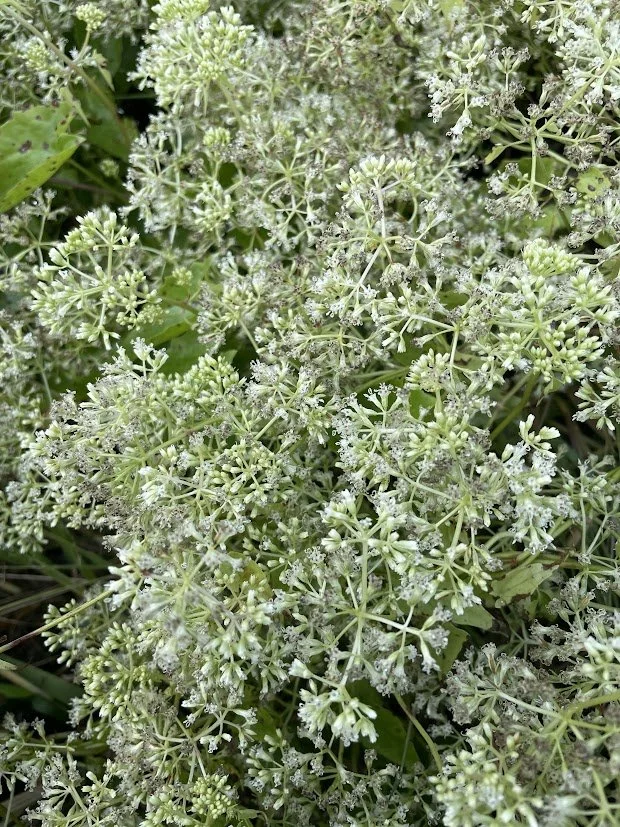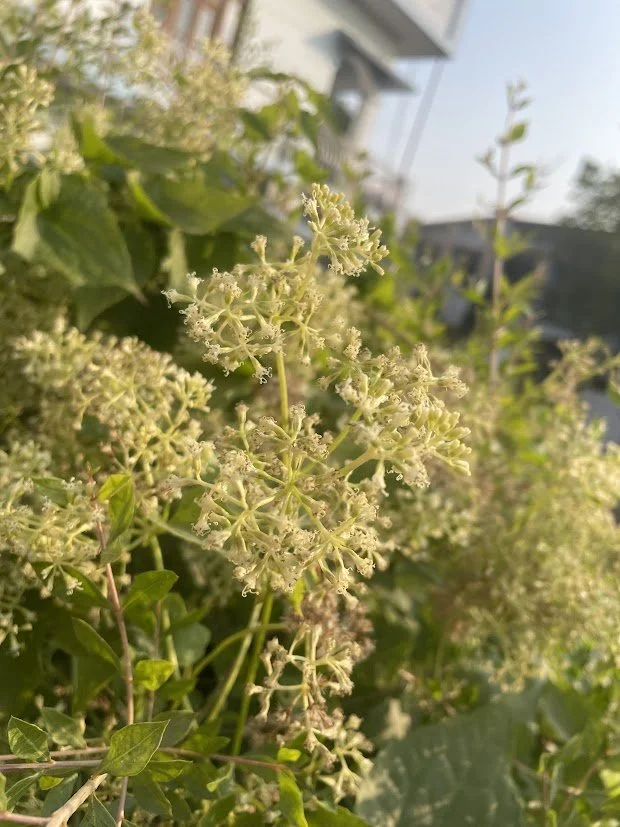A Vine that conquered the Forest



It was November 1977 when I first arrived at the State Forest Service College-cum-Regional Research Centre (now CASFOS) in Burnihat, a small, sleepy town back then overlooking the misty hills of Assam and Meghalaya. As a forest biologist, I was eager to immerse myself in the region’s biodiversity. But what caught my eye—and baffled me—was a shining green vine, growing unchecked over trees, shrubs, and open fields.
My first approach was to consult Flora of British India dated 1878. The book identified a similar species—Mikania scandens—but something didn’t seem right. The specimen I had collected had triangular leaves and stark white flowers, whereas Mikania scandens was known for its oval leaves and pinkish blooms.
It remained a botanist’s nightmare for me till I had some conversations with local communities and veteran foresters, some with memories stretching back to the 1950s. The plant was not Mikania scandens, but Mikania micrantha, an invasive vine from Central and South America.
A War Legacy Turned Ecological Nightmare
I gathered that British forces had introduced Mikania micrantha in India during World War II, sometime in the 1940s, primarily to camouflage airfields in Northeast India from Japanese bombers entering via Myanmar. It seemed like a brilliant strategy at the time, but no one foresaw the ecological havoc it would unleash. Thriving in warm, humid climates with disturbed habitats, it began an unchecked invasion across India and Nepal’s Terai region. Since then, the vine has become a major invasive species, profusely seeding and rapidly spreading across large areas of India and Terai of Nepal due to its fast growth. Today, Mikania micrantha ranks among the top 100 worst invasive species worldwide, growing at an astonishing rate of 20-30 cm per day under ideal conditions. A single juvenile plant can surge up to 90 mm in just 24 hours, and within a year, a single node can give rise to 155 new nodes, covering over a kilometer in length. t’s no wonder locals call it the “mile-a-minute” vine.
Each plant can produce over 30,000 seeds annually, which are effortlessly dispersed by wind, insects like butterfllies, or carried on hair, socks and clothing. It doesn’t just rely on seeds—stem fragments can take root, making eradication nearly impossible.
A Silent Killer or a A Double-Edged Vine
Beyond its aggressive growth, Mikania micrantha is a master of chemical warfare. The vine releases allelopathic compounds—toxins that inhibit the germination and growth of nearby plants. Mikania has a tendency to over-run other nearby plant species and killing them by overtopping and blocking off sunlight.
Yet, paradoxically, this invasive species has found a place in traditional medicine. Indigenous communities use its leaves for wound healing, inflammation relief, and even mental well-being. Research has shown that Mikania micrantha possesses antimicrobial properties, effective against multidrug-resistant bacteria. In Mizoram, farmers even use it as green manure to boost rice yields.